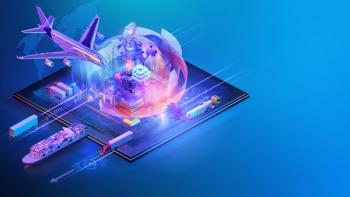
- BioPharm International-09-01-2005
- Volume 18
- Issue 9
Final Word: Collaborate to Compete?
Daunting but common challenges currently face many biotech, pharmaceutical, and device firms. These companies are encountering a restless public, worried investors, and a skeptical, publicity-hungry Congress that are all concerned about product safety and the reliability of regulators' scrutiny.
Daunting but common challenges currently face many biotech, pharmaceutical, and device firms. These companies are encountering a restless public, worried investors, and a skeptical, publicity-hungry Congress that are all concerned about product safety and the reliability of regulators' scrutiny. Individual firms are arming themselves to fight their own particular safety issues, financial challenges, or public relations blunders. R&D costs are up, yet biopharmaceutical productivity is down. Given this landscape, industry observers are beginning to conclude that collaborating in key pre-competitive areas might actually benefit the industry as a whole by creating a much stronger arena for future competition.
Ernst R. Berndt, Ph.D.
In mid-August, the MIT Center for Biomedical Innovation (CBI) hosted a day-long forum (full video at http://
The MIT-CBI Forum focused on recent scientific, bioengineering, informatic, and process advances that will improve the benefit/risk ratio of therapeutic innovation in the areas of:
- Biosafety testing, from pre-clinical analyses to product launch
- Manufacturing scale-up and product distribution systems
- Pharmaco-vigilance and post-launch market surveillance.
One of the themes that emerged from the panel discussions was the likelihood of significantly increased and changing roles for information technology in the drug development and post-launch surveillance processes. While industry and patient advocacy groups have long argued that FDA should bundle rapid approval of innovative medicines with more intensive and comprehensive post-launch monitoring, the recent market withdrawals of Vioxx and Bextra for safety reasons has heightened the public's awareness of the need for effective surveillance.
Patient registries can provide useful information, but as panelists noted, not only are they costly to develop, but frequently only after they are functioning is it realized that several critically important questions have been inadvertently omitted. An alternative possibility involves linking databases from the clinical development process to multi-million-member medical claims databases, but this raises at least two additional concerns. First, to facilitate effective surveillance, the various medical claims databases and patient registries must be able to communicate with each other, which requires collaboration on standards not only among drug developers, but also with insurers/payers, else, as CBI Executive Director Dr. Frank Douglas noted, "we will erect a 21st century Tower of Babel." Second, since data from such sources typically are observational rather than experimentally randomized, criteria must be developed that spell out the evidentiary standards that would warrant conditions under which there is sufficient evidence for FDA or the manufacturer to issue new warnings or even withdraw a medicine from the market for safety reasons. Developing bio-informatic statistical tools and software that reliably distinguish random and innocuous chance events from evidence suggestive of genuine medical adverse events requires collaboration not only among institutions but also across disciplines. Further, as CMS Administrator Dr. Mark McClellan noted in the previous year's event at MIT, the sharing of post-launch surveillance data offers opportunities for enhanced collaboration and contributions from ex-US healthcare systems.
Dr. Douglas closed the forum by noting that "the approach to solutions is actually very simple and yet at the same time very difficult. It has to do with sociology. Are we willing in a real sense to collaborate in order to compete? That is the paradigm shift. CBI is in a strange way attempting to tackle that problem." The opportunity costs of not collaborating on pre-competitive issues facing the industry and society are staggering. Could a "safe haven" be created where data could be generated, analyzed, and shared and standards established to the benefit of all? "Our CBI Stakeholders from industry and government," Douglas continued, "have said resoundingly that if CBI could find those areas where we can collaborate to compete, it could indeed make a tremendous contribution to all working in the healthcare space."
Ernst R. Berndt, Ph.D., director and program leader, MIT Center for Biomedical Innovation and Professor of Applied Economics, MIT Sloan School of Management; Cambridge, MA; 617.253.2665; fax 617.258.6855;
Articles in this issue
over 20 years ago
Building Automation Systems in a PAT Frameworkover 20 years ago
Regulatory Beat: Crawford Faces Policy and Program Challengesover 20 years ago
Operations Excellence: BioPharma Operations Excellenceover 20 years ago
The United Kingdom: Leading the Global Competition for Biotechover 20 years ago
International Patents and International Harmonizationover 20 years ago
The Search for Cancer Diagnostic Markers: A Race Against Timeover 20 years ago
StreetTalk: No Cure for Cancer? Wall Street Waits - and Hesitatesover 20 years ago
Outsourcing: All Eyes on AsiaNewsletter
Stay at the forefront of biopharmaceutical innovation—subscribe to BioPharm International for expert insights on drug development, manufacturing, compliance, and more.





